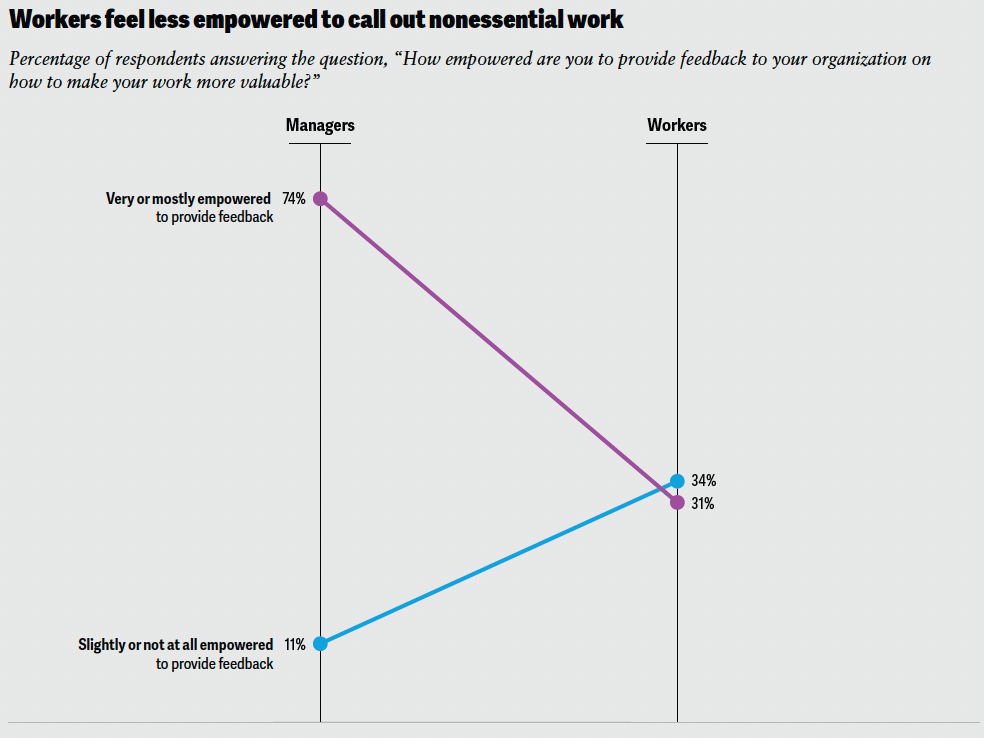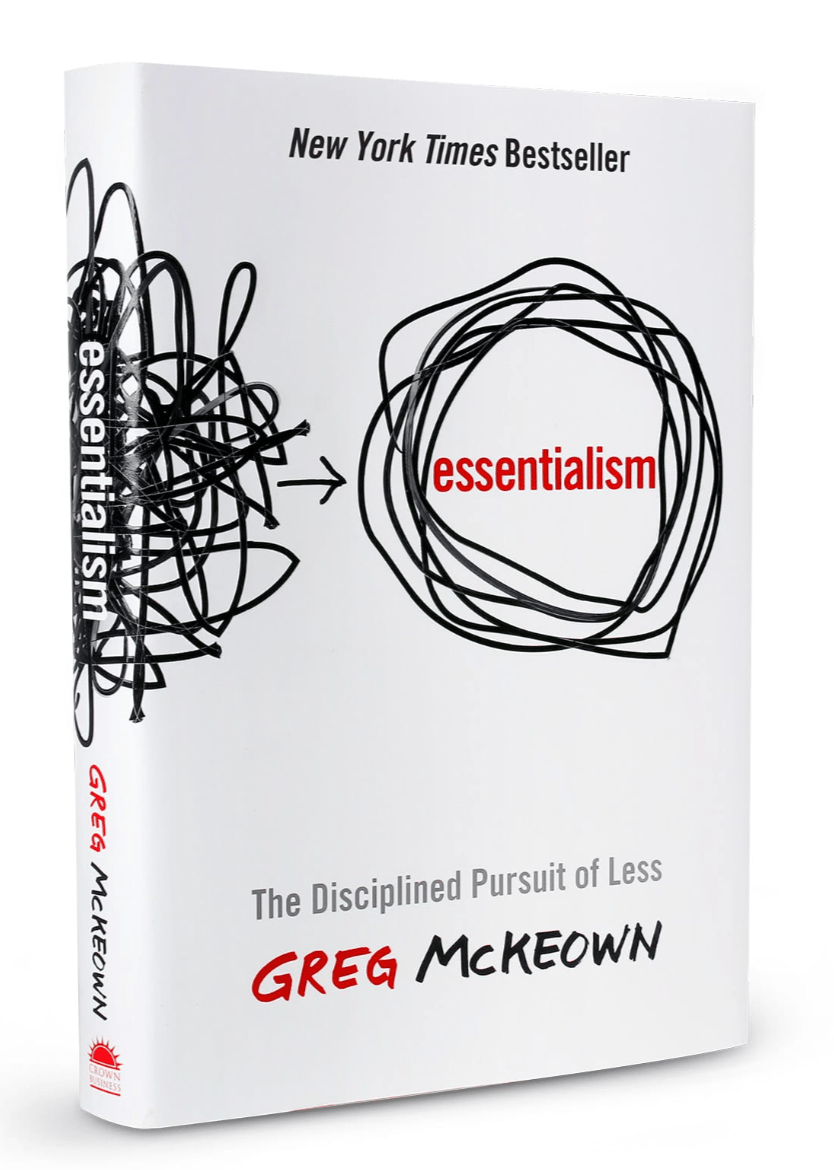- WeAreHuman@Work
- Posts
- WeAreHuman@Work | #022 | You’re Busy. But Are You Getting Anything Done?
WeAreHuman@Work | #022 | You’re Busy. But Are You Getting Anything Done?
WeAreHuman@Work is a newsletter dedicated to fostering a more sustainable world of work.
THIS WEEK'S CONTENT
Deloitte’s 2025 Global Human Capital Trends report is here—one of my favourite annual reads.
Over the next eight weeks, I’ll break down each trend into actionable insights for leaders navigating uncertainty and transformation.
This week: Trend #2: When Work Gets in the Way of Work: Reclaiming Organisational Capacity
Below is the executive summary and a few hand-picked resources to help you go deeper.
🔍 ZOOM IN
When Work Gets in the Way of Work: Reclaiming Organisational Capacity | Trend #2 from 2025 Global Human Capital Trends | Deloitte (2025)
In a world drowning in busyness, what if the key to productivity is doing less, not more?
Organisations are suffocating under unnecessary tasks, meetings, and digital distractions. This groundbreaking report reveals how companies can liberate worker potential by reimagining the concept of 'slack' – creating intentional, unassigned time that drives innovation, reduces burnout, and transforms workplace productivity.
📊 DID YOU KNOW?
Consider this: Nearly 8 in 10 workers describe themselves as 'busy', and 68% of respondents say they don't have enough uninterrupted time to focus on essential tasks during the workday.
👀 DID YOU SEE?
The figure below reveals a striking organisational disconnect: Whilst 74% of managers feel empowered to provide feedback about work improvements, only 31% of workers feel the same way. This visualisation exposes a critical gap in employee engagement and organisational communication, highlighting how top-down perspectives can dramatically differ from ground-level experiences.

✨ EXECUTIVE SUMMARY
The core argument in the Deloitte Global Human Capital Trends report for 2025 challenges traditional productivity paradigms. The report was authored by a team including Stephen Harrington, Corrie Commisso, William D Eggers, Kevin Moss, Tom Alstein, and Julie Duda. Based on a survey of nearly 10,000 business and human resources leaders across 93 countries, the research reveals a critical disconnect in how organisations approach work.
The report traces the historical irony of technological advancement: economist John Maynard Keynes first predicted in 1930 that advanced technology would lead to a 15-hour workweek within a century. Instead, workers become increasingly overwhelmed by technological tools meant to increase efficiency.
🔍 WHY IT MATTERS
↳ Productivity Paradox. Traditional workplace metrics are fundamentally broken, creating a system that values visible effort over meaningful outcomes. The current approach prioritises time spent over actual value created, leading to widespread burnout, disengagement, and a profound misunderstanding of human potential in the workplace.
↳ Technological Complexity. Every wave of technological advancement was supposed to make work more efficient, yet the opposite has occurred. New tools designed to increase productivity instead add layers of complexity, generating more notifications, dashboards, and digital busywork that drain worker energy and focus.
↳ Worker Well-being Crisis. The constant pressure to appear busy is eroding mental health and organisational performance at an unprecedented scale. Workers have internalised a toxic narrative that every minute must be utilised, with 43% spending over 10 hours weekly attempting to look productive rather than creating genuine value.
↳ Economic and Human Performance Implications. The cost of unnecessary work extends far beyond individual stress. Organisations are losing substantial financial and creative potential, with 41% of workers' daily time spent on activities that don't contribute to organisational value. This systemic inefficiency represents a massive untapped reservoir of human potential.
↳ Future of Work Transformation. Organisations face a critical inflexion point as generative AI begins to handle transactional tasks. The ability to strategically reimagine human capacity will determine which companies thrive in the emerging technological landscape, making the reimagining of work not just an option but a strategic imperative.
💡 KEY INSIGHTS
↳ Busywork Epidemic. The research reveals a startling reality: 42% of workers spend half their time on tasks that don't contribute to organisational goals. This chronic misallocation of human resources represents a fundamental breakdown in conceptualising and managing work.
↳ Collaboration Overload. Over the past two decades, collaborative activities have dramatically increased by 50% or more. Paradoxically, this surge in collaboration has not enhanced productivity but often serves as a distraction, consuming critical time and mental energy that could be directed towards meaningful work.
↳ Economic Impact of Inefficiency. Unnecessary meetings are not just a nuisance but a significant financial drain. The report estimates that unproductive meetings could cost organisations over US$25,000 per employee annually, representing a massive hidden organisational expense.
↳ Technology's Double-Edged Sword. Workers now spend 9% of their year (nearly 200 hours) simply switching between workplace applications. This 'toggle tax' demonstrates how technology intended to enhance productivity often creates additional cognitive load and fragmentation.
↳ Organisational Awareness Gap. Only 22% of survey respondents believe their organisation is highly effective at simplifying work. This reveals a critical disconnect between organisational leadership's perception and workplace experience.
🚀 ACTIONS FOR LEADERS
↳ Redefine Organisational Slack. Create intentional, unscheduled time where workers have complete autonomy. This means deliberately designing work processes that include buffer time, following models like DPG Media, which only schedules 80% of team capacity, leaving 20% for unexpected work and innovation.
↳ Implement Holistic Work Design. Develop a framework that combines horizontal collaboration and vertical empowerment. This approach involves breaking down silos, encouraging cross-functional input, and clarifying ownership and accountability across all organisational levels.
↳ Strategically Leverage AI. Artificial intelligence processes routine tasks, freeing human potential for more complex, creative work. Companies like JPMorgan Chase demonstrate how AI can revolutionise document interpretation and analysis, creating space for higher-value human contributions.
↳ Transform Performance Metrics. Develop outcome-based performance measurements that prioritise value creation over time spent. Follow examples like Zappos, which measures customer satisfaction rather than issue resolution speed, emphasising meaningful impact over procedural efficiency.
↳ Establish Continuous Improvement Processes. Create a culture of ongoing work reassessment, regularly evaluating and eliminating non-essential processes. This isn't a one-time exercise but a continuous effort to optimise organisational agility and human potential.
💬 QUESTION FOR THE BOARDROOM
How can we transform organisational culture to prioritise meaningful work over mere task completion?
🔗 CONCLUSION
The report challenges long-held assumptions about workplace productivity, offering a nuanced, human-centric approach to organisational design. Companies can create more innovative, engaged, and resilient workforces by embracing' slack' and reimagining work. The future of work demands a fundamental shift from measuring hours to valuing meaningful outcomes, recognising that actual productivity emerges when organisations create space for human potential to flourish.
🎯 KEY TAKEAWAY
Productivity isn't about doing more but creating space for what truly matters.
📚 READ
If this trend made you reflect on how work is (or isn’t) working, here are two books that reshaped the way I think about time and focus:
Essentialism: The Disciplined Pursuit of Less by Greg McKeown Far more than a time management book, Essentialism is a manifesto for leaders and teams stretched too thin. McKeown challenges the belief that we can do it all—and shows how success often comes from choosing what not to do. With clarity and practical insight, he teaches the principle of “less but better” to help design more focused lives and organisations. |  |
 | Four Thousand Weeks: Time Management for Mortals by Oliver Burkeman Burkeman challenges the cult of productivity with a thoughtful, honest take on our finite time. Instead of doing more, he invites leaders to embrace limits, focus on what matters, and pursue a more meaningful, intentional approach to work and life. |
🎧 TUNE IN
If this trend had an anthem, Queen already wrote it.
“I want to break free.”
Because people aren’t tired of working.
They’re tired of wasting time.
Endless meetings.
Busywork.
Nearly half of workers’ time is spent on tasks that don’t create value.
Productivity has become performative.
Effort over outcomes.
Activity over impact.
The solution?
Redesign slack.
Reclaim capacity.
Make space for work that matters.
Queen said it best. Now leaders need to listen.
👉 What are you doing to help people break free from work that gets in the way?

💭 REFLECT
Time is what we want most, but what we use worst.